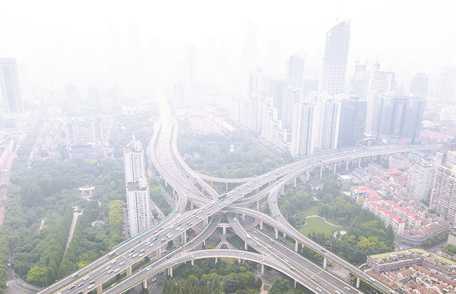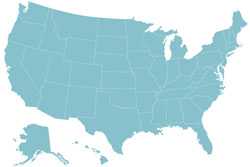Unhealthy Air, Unhealthy Heart
 The air we breathe can have a big effect on heart and brain health. Polluted air, such as smog or wildfire smoke, can lead to heart disease and trigger heart attacks and strokes especially in people already at risk. Learn how air quality is tied to cardiovascular disease and how you can stay healthy indoors and out doors.
The air we breathe can have a big effect on heart and brain health. Polluted air, such as smog or wildfire smoke, can lead to heart disease and trigger heart attacks and strokes especially in people already at risk. Learn how air quality is tied to cardiovascular disease and how you can stay healthy indoors and out doors.
Sometimes air pollution is obvious, but often the air is full of things we cannot see, including tiny particles. Particles can be solid or liquid and can form naturally or as a result of car exhaust, industry, or wildfires. Some particles are so small (much thinner than a human hair1) that they can get into your lungs and bloodstream, putting you at risk of heart attack and stroke.1
Worldwide, more than 9 in 10 people are exposed to unhealthy levels of air pollution, mostly from road traffic, industrial emissions, and burning of fuels for heat or cooking.2 The World Health Organization estimates that air pollution causes more than 3 million deaths each year.2 Air pollution may cause up to 200,000 early deaths each year in the United States.3
As the weather warms and people spend more time outside, everyone should learn how to Be Air Aware during Air Quality Awareness Week (May 1–5, 2017) and beyond.
How Does Air Pollution Harm Your Heart and Brain?
People who breathe polluted air over a long time have a higher risk of heart and brain problems than people who aren’t exposed to air pollution. But even short-term exposure can raise the risk of heart attack, stroke, and irregular heartbeat in people who are already at risk for those conditions. Breathing in the tiny particles that float in polluted air, called “particulates,” can raise your risk of heart attack and stroke by:4
- Raising your risk of blood clots, which can cause stroke.
- Raising your blood pressure.5
- Causing inflammation (swelling) in your blood vessels.
- Hardening your arteries (atherosclerosis).
- Causing an irregular heartbeat.
 Certain groups are more at risk exposed to polluted air.
Certain groups are more at risk exposed to polluted air.These health effects can keep oxygen and other nutrients in your blood from reaching your heart and brain.
Who Is at Risk?
Although air quality in the United States is better than it was decades ago, certain groups are at a higher risk of breathing polluted air because of where they live or work. People at risk include:6
- Those living or working near railyards, major roadways, and industrial areas.
- Those exposed to wildfire smoke, which can drift hundreds of miles.
Although breathing polluted air is not good for anyone, certain groups are more at risk of heart attack and stroke after even short-term exposure. These groups include6,7
- People with chronic health problems, including asthma, untreated high blood pressure, and heart disease.
- Older adults.
- People with type 2 diabetes, especially women.8
- Smokers.
- Children.
How Can You Protect Yourself and Your Family?
You can take several steps to protect yourself and your family from air pollution and its harmful effects.
Have a healthy heart now. Being heart healthy makes you less vulnerable to the effects of air pollution. Strengthen your heart by making smart food choices, getting plenty of physical activity each week, and not smoking. Manage any health conditions, such as high blood pressure, by taking the medicines you’ve been prescribed.
Be air aware. If you’re headed outside to work or play, check your local air quality index. A green rating means it’s safe for everyone to spend time outdoors. But yellow and orange ratings mean people with health conditions should reduce how much time they spend outside and how heavily they exercise.
 You can check air quality for the areas where you live, work, and travel at AirNow.gov. Avoid going outside if you know the air quality is dangerous.
You can check air quality for the areas where you live, work, and travel at AirNow.gov. Avoid going outside if you know the air quality is dangerous.Change how and where you exercise. If the air quality is yellow or worse, avoid exercise that will make you breathe hard. For example, consider going for a walk instead of a jog. You can also switch to indoor exercises, such as riding a stationary bike, doing yoga, or swimming. Avoid exercising near or downwind of busy roadways, power plants, or industrial areas.
Get an air purifier. Consider an air purifier for your house and office. Some air purifiers can reduce the amount of particulates in the air by half, which can lower blood pressure and inflammation.9
References
- US Environmental Protection Agency. Particulate Matter (PM) Basics website. Accessed March 30, 2017.
- World Health Organization. Inheriting a Sustainable World? Atlas on Children’s Health and the Environment. Geneva, Switzerland: World Health Organization; 2017.
- Caiazzo F, Ashok A, Waitz IA, Yim SHL, Barrett SRH. Air pollution and early deaths in the United States. Part I: quantifying the impact of major sectors in 2005. Atmos Environ. 2013;79:198–208. doi: 10.1016/j.atmosenv.2013.05.081.
- AirNow. Particle Pollution (PM) website.
- Cai Y, Zhang B, Ke W, et al. Associations of short-term and long-term exposure to ambient air pollutants with hypertension: a systematic review and meta-analysis. Hypertension. 2016;68(1):62–70. doi: 10.1161/HYPERTENSIONAHA.116.07218.
- Brook RD, Newby DE, Rajagopalan S. The global threat of outdoor ambient air pollution to cardiovascular health: time for intervention. JAMA Cardiol. 2017 [published online ahead of print February 22, 2017]. doi: 10.1001/jamacardio.2017.0032 .
- US Environmental Protection Agency. Healthy Heart Toolkit: Resources for Health Professionals website. What is the link between Air Pollution and Cardiovascular Effects?
- Hart JE, Puett RC, Rexrode KM, Albert CM, Laden F. Effect modification of long-term air pollution exposures and the risk of incident cardiovascular disease in US women. J Am Heart Assoc. 2015;4(12):e002301. doi: 10.1161/JAHA.115.002301.
- US Environmental Protection Agency. Particle Pollution and Your Health website.
More Information
More Information
- CDC
- American Heart Association: Air Pollution and Heart Disease, Stroke
- US Environmental Protection Agency:
- Page last reviewed: April 25, 2017
- Page last updated: April 25, 2017
- Content source:
- National Center for Chronic Disease Prevention and Health Promotion, Division for Heart Disease and Stroke Prevention
- Page maintained by: Office of the Associate Director for Communication, Digital Media Branch, Division of Public Affairs




 ShareCompartir
ShareCompartir